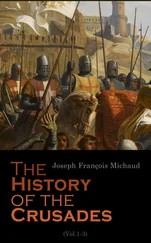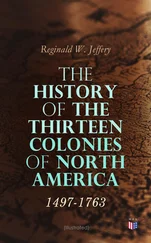259"On the 17th of November, 1767, a bill was brought into the House of Assembly "to prevent the unnatural and unwarrantable custom of enslaving mankind, and the importation of slaves into this province." It was changed into an act "for laying an impost on Negroes imported." This could not pass the governor and council; and it was afterward known that Benning I. Wentworth, the governor of New Hampshire, had received instructions not to pass any law "imposing duties on negroes imported into that province." Hutchinson of Massachusetts had similar instructions. The governor and his Majesty's council knew this at the time.
CHAPTER XIV.
THE COLONY OF MASSACHUSETTS.
Table of Contents
1633–1775.
The Earliest Mentions of Negroes in Massachusetts.—Pequod Indians exchanged for Negroes.—Voyage of the Slave-Ship "Desire" in 1638.—Fundamental Laws adopted.—Hereditary Slavery.—Kidnapping Negroes.—Growth of Slavery in the Seventeenth Century.—Taxation of Slaves.—Introduction of Indian Slaves prohibited.—The Position of the Church respecting the Baptism of Slaves.—Slave Marriage.—Condition of Free Negroes.—Phillis Wheatley the African Poetess.—Her Life.—Slavery recognized in England in Order to be maintained in the Colonies.—The Emancipation of Slaves.—Legislation favoring the Importation of White Servants, but prohibiting the Clandestine Bringing-in of Negroes.—Judge Sewall's Attack on Slavery.—Judge Saffin's Reply to Judge Sewall.
Had the men who gave the colony of Massachusetts its political being and Revolutionary fame known that the Negro—so early introduced into the colony as a slave—would have been in the future Republic for years the insoluble problem, and at last the subject of so great and grave economic and political concern, they would have committed to the jealous keeping of the chroniclers of their times the records for which the historian of the Negro seeks so vainly in this period. Stolen as he was from his tropical home; consigned to a servitude at war with man's intellectual and spiritual, as well as with his physical, nature; the very lowest of God's creation, in the estimation of the Roundheads of New England; a stranger in a strange land—the poor Negro of Massachusetts found no place in the sympathy or history of the Puritan—Christians whose deeds and memory have been embalmed in song and story, and given to an immortality equalled only by the indestructibility of the English language. The records of the most remote period of colonial history have preserved a silence on the question of Negro slavery as ominous as it is conspicuous. What data there are concerning the introduction of slavery are fragmentary, uncertain, and unsatisfactory, to say the least. There is but one work bearing the luminous stamp of historical trustworthiness, and which turns a flood of light on the dark records of the darker crime of human slavery in Massachusetts. And we are sure it is as complete as the ripe scholarship, patient research, and fair and fearless spirit of its author, could make it. 260
The earliest mention of the presence of Negroes in Massachusetts is in connection with an account of some Indians who were frightened at a Colored man who had lost his way in the tangled path of the forest. The Indians, it seems, were "worse scared than hurt, who seeing a blackamore in the top of a tree looking out for his way which he had lost, surmised he was Abamacho , or the devil; deeming all devils that are blacker than themselves: and being near to the plantation, they posted to the English, and entreated their aid to conjure this devil to his own place, who finding him to be a poor wandering blackamore, conducted him to his master." 261This was in 1633. It is circumstantial evidence of a twofold nature; i.e., it proves that there were Negroes in the colony at a date much earlier than can be fixed by reliable data, and that the Negroes were slaves. It is a fair presumption that this "wandering blackamore" who was conducted "to his master " was not the only Negro slave in the colony. Slaves generally come in large numbers, and consequently there must have been quite a number at this time.
Negro slavery in Massachusetts was the safety-valve to the pent-up vengeance of the Pequod Indians. Slavery would have been established in Massachusetts, even if there had been no Indians to punish by war, captivity, and duplicity. Encouraged by the British authorities, avarice and gain would have quieted the consciences of Puritan slave-holders. But the Pequod war was the early and urgent occasion for the founding of slavery under the foster care of a free church and free government ! As the Pequod Indians would "not endure the yoke," would not remain "as servants," 262they were sent to Bermudas 263and exchanged for Negroes, 264with the hope that the latter would "endure the yoke" more patiently. The first importation of slaves from Barbados, secured in exchange for Indians, was made in 1637, the first year of the Pequod war, and was doubtless kept up for many years.
But in the following year we have the most positive evidence that New England had actually engaged in the slave-trade.
"Mr. Pierce, in the Salem ship, the Desire, returned from the West Indies after seven months. He had been at Providence, and brought some cotton, and tobacco, and negroes, &c., from thence, and salt from Tertugos. … Dry fish and strong liquors are the only commodities for those parts. He met there two men-of-war, sent forth by the lords, &c., of Providence with letters of mart, who had taken divers prizes from the Spaniard and many negroes." 265
"The Desire" was built at Marblehead in 1636; 266was of one hundred and twenty tons, and perhaps one of the first built in the colony. There is no positive proof that "The Mayflower," after landing the holy Pilgrim Fathers, was fitted out for a slave-cruise! But there is no evidence to destroy the belief that "The Desire" was built for the slave-trade. Within a few years from the time of the building of "The Desire," there were quite a number of Negro slaves in Massachusetts. "John Josselyn, Gen't" in his "Two Voyages to New England," made in "1638, 1663," and printed for the first time in 1674, 267gives an account of an attempt to breed slaves in Massachusetts.
"The Second of October , (1639) about 9 of the clock in the morning, Mr. Maverick's Negro woman came to my chamber window, and in her own Countrey language and tune sang very loud and shril, going out to her, she used a great deal of respect towards me, and willingly would have expressed her grief in English ; but I apprehended it by her countenance and deportment, whereupon I repaired to my host, to learn of him the cause, and resolved to entreat him in her behalf, for that I understood before, that she had been a Queen in her own Countrey, and observed a very humble and dutiful garb used towards her by another Negro who was her maid. Mr. Maverick was desirous to have a breed of Negroes, and therefore seeing she would not yield by persuasions to company with a Negro young man he had in his house; he commanded him will'd she nill'd she to go to bed to her, which was no sooner done but she kickt him out again, this she took in high disdain beyond her slavery, and this was the cause of her grief." 268
It would appear, at first blush, that slavery was an individual speculation in the colony; but the voyage of the ship "Desire" was evidently made with a view of securing Negro slaves for sale. Josselyn says, in 1627, that the English colony on the Island of Barbados had "in a short time increased to twenty thousand, besides Negroes." 269And in 1637 he says that the New Englanders "sent the male children of Pequets to the Bermudus." 270It is quite likely that many individuals of large means and estates had a few Negro slaves quite early—perhaps earlier than we have any record; but as a public enterprise in which the colony was interested, slavery began as early as 1638. "It will be observed," says Dr. Moore, "that this first entrance into the slave-trade was not a private, individual speculation. It was the enterprise of the authorities of the colony. And on the 13th of March, 1639, it was ordered by the General Court "that 3 l 8 s should be paid Lieftenant Davenport for the present, for charge disbursed for the slaves, which, when they have earned it, hee is to repay it back againe." The marginal note is "Lieft. Davenport to keep ye slaves." (Mass. Rec. i. 253. 271) So there can be no doubt as to the permanent establishment of the institution of slavery as early as 1639, while before that date the institution existed in a patriarchal condition. But there isn't the least fragment of history to sustain the haphazard statement of Emory Washburn, that slavery existed in Massachusetts "from the time Maverick was found dwelling on Noddle's Island in 1630." 272We are sure this assertion lacks the authority of historical data. It is one thing for a historian to think certain events happened at a particular time, but it is quite another thing to be able to cite reliable authority in proof of the assertion. 273But no doubt Mr. Washburn relies upon Mr. Palfrey, who refers his reader to Mr. Josselyn. Palfrey says, "Before Winthrop's arrival, there were two negro slaves in Massachusetts, held by Mr. Maverick, on Noddle's Island." 274Josselyn gives the only account we have of the slaves on Noddle's Island. The incident that gave rise to this scrap of history occurred on the 2d of October, 1639. Winthrop was chosen governor in the year 1637. 275It was in this year, on the 26th of February, that the slave-ship "Desire" landed a cargo of Negroes in the colony. Now, if Mr. Palfrey relies upon Josselyn for the historical trustworthiness of his statement that there were two Negroes in Massachusetts before Winthrop arrived, he has made a mistake. There is no proof for the assertion. That there were three Negroes on Noddle's Island, we have the authority of Josselyn, but nothing more. And if the Negro queen who kicked Josselyn's man out of bed had been as long in the island as Palfrey and Washburn indicate, she would have been able to explain her grief to Josselyn in English. We have no doubt but what Mr. Maverick got his slaves from the ship "Desire" in 1638, the same year Winthrop was inaugurated governor.
Читать дальше












